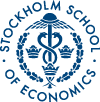No 501: Cost-Effectiveness of Alendronate in the Treatment of Osteoporosis in Denmark - An Economic Evaluation Based on the Fracture Intervention Trial
Linus Jönsson, Fredrik Borgström () and Niklas Zethraeus ()
Additional contact information
Linus Jönsson: Division of Neurology, Karolinska Institutet, Huddinge Hospital, Postal: SE-171 77 Stockholm, Sweden
Fredrik Borgström: Stockholm Healtheconomics Consulting AB, Postal: Kungsgatan 62, SE-753 18 Uppsala, Sweden
Niklas Zethraeus: Dept. of Economics, Stockholm School of Economics, Postal: Stockholm School of Economics, P.O. Box 6501, SE-113 83 Stockholm, Sweden
Abstract: Background: The Fracture Intervention Trial (FIT) showed that the bisphosphonate alendronate reduces the risk of fractures in women with low bone mass in the United States.
Objective: To estimate the cost-effectiveness (cost per life-year gained and cost per quality-adjusted life-year, QALY, gained) of treating osteoporotic women in Denmark with alendronate, compared with no treatment.
Design: A Markov model earlier used in the economic evaluation for Sweden was adapted using epidemiological and cost data for Denmark. In the base-case alendronate was assumed to have a fracture-risk reducing effect for ten years; a treatment duration period of 5 years followed by a 5-year period where the effect declined linearly to zero.
Results: Treating a 71-year old (the mean age in the vertebral arm of the FIT) osteoporotic woman with one prior vertebral fracture with alendronate was found to be associated with a cost of DKK 52,311 per QALY gained. The cost-effectiveness ratio when treating a 69-year old woman with low bone mass and without previous vertebral fractures was higher (DKK 205,816) but still within the limits of what can be considered good value for money.
Conclusions: The results of this study indicate that treatment with alendronate in Denmark is cost-effective, provided the treatment is targeted towards high-risk patients corresponding to the patient groups in the FIT study.
Keywords: osteoporosis; cost-effectiveness; quality of life; Markov models; acceptability curve
29 pages, May 21, 2002
Full text files
hastef0501.pdfFull text
Questions (including download problems) about the papers in this series should be directed to Helena Lundin ()
Report other problems with accessing this service to Sune Karlsson ().
RePEc:hhs:hastef:0501This page generated on 2024-09-13 22:15:06.

